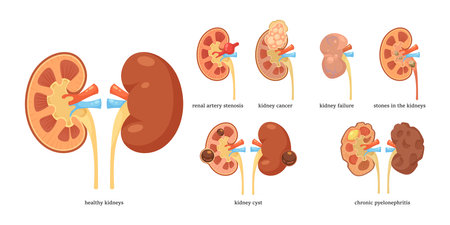Introduction to Cardiac Rehabilitation in the UK
Cardiac rehabilitation (CR) stands as a cornerstone of cardiovascular care within the United Kingdom, playing a critical role in supporting patients recovering from heart-related events or interventions. Delivered primarily through the National Health Service (NHS), cardiac rehabilitation encompasses a structured programme designed to help individuals regain and maintain optimal physical, psychological, and social well-being following a cardiac event such as myocardial infarction, coronary artery bypass grafting, or angioplasty. The significance of CR is underscored by its evidence-based approach to reducing mortality, minimising hospital readmissions, and improving quality of life for those with heart disease. Across the UK, multidisciplinary teams—including physiotherapists, nurses, dietitians, and psychologists—work collaboratively to deliver comprehensive care tailored to each patient’s needs. This holistic model not only addresses the immediate health concerns post-cardiac event but also empowers patients to adopt healthier lifestyles, manage risk factors, and engage actively in their long-term recovery journey. As such, cardiac rehabilitation has become an integral part of the NHS strategy to tackle the burden of cardiovascular disease and promote sustainable health outcomes across communities throughout England, Scotland, Wales, and Northern Ireland.
2. Core Principles of Cardiac Rehabilitation
Cardiac rehabilitation (CR) in the United Kingdom is underpinned by a set of core principles that ensure high-quality, effective care for patients recovering from cardiac events. These principles are shaped by robust evidence, national guidelines such as those issued by the National Institute for Health and Care Excellence (NICE), and an unwavering commitment to patient-centred practice. The following examination outlines these foundational elements, with attention to how they are tailored within the UK context.
Evidence-Based Practice
At its heart, cardiac rehabilitation in the UK adheres to interventions supported by clinical research and best-practice guidelines. This approach ensures that every component—be it exercise prescription, educational sessions, or psychological support—reflects up-to-date scientific evidence and contributes meaningfully to patient outcomes.
Key Sources of Evidence:
| Source | Description |
|---|---|
| NICE Guidelines | National standards shaping CR delivery across NHS settings |
| BACPR Standards | British Association for Cardiovascular Prevention and Rehabilitation’s best practices |
| Cochrane Reviews | Systematic reviews underpinning specific interventions |
Patient-Centred Care
The UK model places significant emphasis on personalising rehabilitation. Programmes are tailored according to individual risk profiles, health literacy, preferences, and social circumstances. This bespoke approach helps address inequalities in access and outcomes, particularly for groups at higher risk of cardiovascular disease or with unique needs.
Pillars of Patient-Centred Care in the UK:
| Pillar | Application in CR |
|---|---|
| Individual Assessment | Comprehensive baseline evaluations inform bespoke plans |
| Shared Decision-Making | Patients actively participate in setting goals and choosing interventions |
| Cultural Sensitivity | Programmes respect linguistic, cultural, and religious diversity common across the UK population |
Multidisciplinary Collaboration
A defining feature of UK cardiac rehabilitation is its multidisciplinary team structure. Nurses, physiotherapists, dietitians, psychologists, and cardiologists collaborate to deliver integrated care. This collective expertise ensures holistic management covering physical recovery, lifestyle modification, mental wellbeing, and ongoing risk reduction.
Sustaining Quality Through Governance
The NHS framework mandates regular audit and quality assurance. Data collection through systems like the National Audit of Cardiac Rehabilitation (NACR) drives continuous improvement and accountability in programme delivery.

3. Programme Structure and Delivery
The structure and delivery of cardiac rehabilitation (CR) across the United Kingdom are guided by nationally recognised standards, such as those set by the British Association for Cardiovascular Prevention and Rehabilitation (BACPR) and the NHS. The programme is designed to be holistic, accessible, and tailored to individual patient needs, ensuring equitable support for all eligible patients irrespective of geographical location.
Phases of Cardiac Rehabilitation
Phase I: Inpatient Initiation
This phase begins during the hospital stay following a cardiac event or procedure. The multidisciplinary team—typically comprising cardiologists, nurses, physiotherapists, occupational therapists, and dietitians—initiates early assessment and education. Patients receive guidance on safe mobilisation, lifestyle modification, medication management, and psychological support to prepare for discharge.
Phase II: Early Outpatient Care
After discharge, patients transition into community-based or home-based care. This phase emphasises continued education, risk factor assessment, and early engagement in physical activity. Communication between primary and secondary care providers is essential to ensure continuity and personalised goal-setting.
Phase III: Structured Exercise and Education
This is the core component of UK cardiac rehabilitation programmes. Delivered in hospitals, community centres, or virtually (especially since the COVID-19 pandemic), this phase typically lasts 6–12 weeks. It combines individually prescribed exercise sessions with comprehensive education covering heart health, nutrition, smoking cessation, stress management, and medication adherence. Sessions are closely monitored by clinical staff to ensure safety and effectiveness.
Phase IV: Long-term Maintenance
Upon completing the formal programme, patients are encouraged to maintain lifestyle changes independently or through local support groups and exercise classes. Ongoing follow-up with primary care teams helps reinforce positive behaviours and identify any emerging issues early.
The Multidisciplinary Approach
A hallmark of UK cardiac rehabilitation is its collaborative model. Teams work together to deliver person-centred care that addresses not just physical recovery but also emotional wellbeing, social support, vocational needs, and long-term risk reduction. Regular multidisciplinary meetings facilitate coordinated care planning tailored to each patient’s unique circumstances.
Innovative Delivery Models
To increase accessibility, many UK services now offer flexible delivery options—including digital platforms for remote monitoring and virtual group sessions. These innovations help reach underserved populations while maintaining high standards of clinical supervision.
Summary
The UK’s structured approach to cardiac rehabilitation ensures that every patient receives comprehensive support throughout their recovery journey—from hospital admission through to long-term self-management—underpinned by multidisciplinary expertise and a commitment to continuous improvement.
4. The Patient Journey: Referral to Long-Term Maintenance
The patient journey within cardiac rehabilitation (CR) in the United Kingdom is a well-structured process that supports individuals from hospital discharge through to long-term healthy living. This pathway is designed to ensure that every patient receives tailored support, education, and interventions aimed at optimising recovery and reducing future cardiovascular risk.
Referral Processes
Referral into CR typically begins during the inpatient phase following a cardiac event, such as myocardial infarction, coronary artery bypass grafting, or angioplasty. Referrals are made by hospital-based cardiologists, cardiac nurses, or ward staff. General Practitioners (GPs) may also refer patients post-discharge if not done during the hospital stay. The referral process involves gathering clinical information and ensuring patient consent for participation in CR programmes.
Initial Assessment
Upon acceptance into a programme, an initial assessment is conducted—usually within two weeks of referral. This multi-disciplinary evaluation includes:
| Assessment Area | Description |
|---|---|
| Clinical Status | Review of medical history, medications, and physical examination |
| Risk Factor Profiling | Assessment of blood pressure, cholesterol, smoking status, diabetes risk, etc. |
| Psycho-social Evaluation | Screening for anxiety, depression, and social support needs |
| Physical Fitness Testing | Submaximal exercise testing or walking tests to determine baseline capacity |
| Goal Setting | Collaborative discussion to agree on individualised targets for rehabilitation |
Active Intervention Phase
The core of CR consists of structured group sessions over six to twelve weeks. These sessions are delivered in community centres, hospitals, or occasionally via home-based and digital platforms. Key components include:
- Supervised exercise training tailored to each patient’s abilities and goals
- Nutritional advice consistent with UK dietary guidelines
- Education on medication adherence, symptom management, and self-monitoring
- Psycho-social support addressing mental health and emotional wellbeing
- Peer support opportunities through group interaction
Programme Structure Example (Typical 8-week Course)
| Week(s) | Main Focus |
|---|---|
| 1-2 | Introduction & Baseline Exercise, Education on Heart Disease & Medication |
| 3-4 | Nutritional Workshops & Stress Management Sessions |
| 5-6 | Progressive Physical Activity & Smoking Cessation Support (if applicable) |
| 7-8 | Sustaining Change & Relapse Prevention Strategies; Final Review & Goal Reassessment |
Sustained Lifestyle Change and Long-Term Maintenance
A crucial aim of UK CR programmes is empowering patients towards lifelong heart health. Upon completion of the active intervention phase, patients undergo a final assessment to review progress and update care plans. They receive personalised advice for ongoing exercise and lifestyle management. Many services provide signposting to local leisure centres or cardiac support groups for continued activity.
Key Strategies for Long-Term Success:
- Written action plans summarising achievements and next steps
- Liaison with GPs for ongoing monitoring and medication review in primary care settings
- Follow-up calls or digital check-ins at 6 months and 12 months post-programme to encourage sustained engagement and address any setbacks early on
- Access to community resources such as walking clubs or British Heart Foundation support networks tailored for cardiac patients in the UK context
This comprehensive pathway—spanning initial referral through long-term maintenance—embodies the collaborative ethos central to NHS cardiac rehabilitation services across the United Kingdom.
5. Challenges, Innovations, and Future Directions
Barriers in UK Cardiac Rehabilitation Services
Despite the well-established framework for cardiac rehabilitation (CR) in the United Kingdom, several persistent challenges continue to influence patient access and outcomes. One notable barrier is the variation in service provision across regions, often influenced by local commissioning priorities and resource allocation. Socioeconomic disparities also play a significant role, with individuals from deprived backgrounds being less likely to attend or complete CR programmes. Additionally, logistical issues such as transport difficulties, work commitments, and caregiving responsibilities further hinder participation, particularly among working-age adults and those living in rural areas. Language barriers and cultural differences can also impact engagement among ethnic minority populations.
Recent Innovations: Digital and Home-Based Models
In response to these challenges, UK services have begun integrating innovative approaches to broaden access and improve adherence. The COVID-19 pandemic accelerated the adoption of digital CR models, including tele-rehabilitation platforms and app-based monitoring tools. These digital solutions enable personalised exercise plans, remote consultations with multidisciplinary teams, and ongoing education without the need for frequent hospital visits. Home-based CR programmes—supported by telephone follow-up or video calls—have become increasingly popular, providing flexibility for patients who may otherwise struggle to attend centre-based sessions. Early evaluations suggest these models are effective in maintaining clinical outcomes while enhancing patient satisfaction and convenience.
Prospective Developments in Cardiac Rehabilitation
Looking ahead, the future of cardiac rehabilitation in the UK is likely to be shaped by greater integration of technology and a more tailored approach to patient needs. There is growing interest in hybrid models that combine face-to-face sessions with digital support, allowing for bespoke pathways that accommodate varying levels of digital literacy and personal preference. The use of wearable devices to monitor physiological data in real-time offers new opportunities for personalised feedback and early identification of clinical concerns. Furthermore, ongoing research is focused on refining risk stratification methods to better identify individuals at highest risk of non-participation or poor outcomes, ensuring targeted interventions can be implemented early in their recovery journey.
Collaborative Efforts and Policy Implications
To address systemic barriers and promote innovation uptake, collaboration between NHS trusts, local authorities, voluntary organisations such as the British Heart Foundation, and patient advocacy groups is essential. National guidance from bodies like NICE continues to evolve, emphasising both equity of access and quality assurance across all CR services. Continued investment in workforce training—including upskilling professionals in digital health delivery—will be crucial for maintaining high standards as service delivery models adapt.
Conclusion: Towards a More Inclusive and Effective Service
The landscape of cardiac rehabilitation in the United Kingdom is dynamic, reflecting both longstanding challenges and promising avenues for improvement. By embracing innovation while remaining attentive to barriers faced by diverse populations, UK CR services are well positioned to enhance recovery outcomes and quality of life for people living with heart disease now and into the future.

